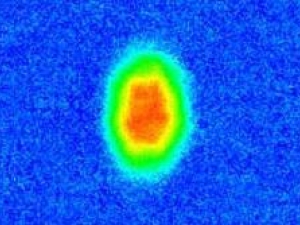
John Thomas, Fritz London Professor Emeritus, has won the Jesse W. Beams Award, given by the Southeastern Section of the American Physical Society for significant and meritorious research. The award was presented on October 21, 2011, at the conference banquet of the 78th Annual Meeting of SESAPS in Roanoke, Virginia. “It’s very exciting,” Thomas says, explaining that he was told that he won the award “for a combination of broad contributions to optical, molecular and atomic physics as well as my current work with atomic Fermi gases.” Thomas recently moved his program from Duke to North Carolina State University, where he is now a full professor. He is continuing his research into Fermi gases, using ultracold lithium-6 atoms that interact strongly when exposed to a magnetic field. Lithium-6 atoms belong to a class of particles called fermions that normally stay apart from each other, much like electrons in atoms, where two electrons cannot be in the same quantum state. But Thomas has figured out a way to make the atoms strongly interact at low temperature.
